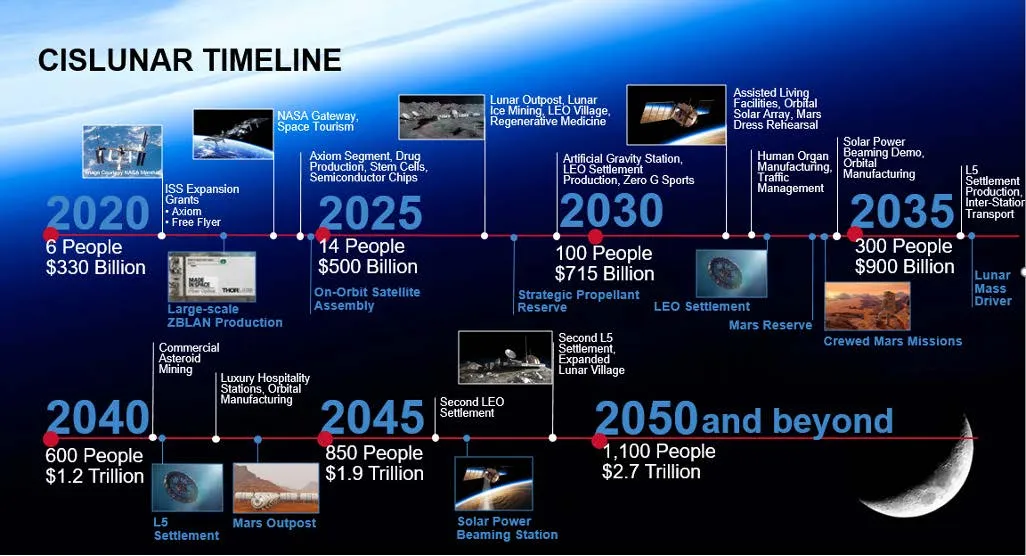Tory Bruno
Erica Otto, Will Clifton, Austin Schmitt, Erin Lococo,
John Sanders, John Reed, Bernard Kutter
Abstract
This study proposes the creation of a Strategic Propellant Reserve using lunar-derived propellant that will drive the growth of a $3 trillion cislunar economy in the next 30 years. A U.S.-backed strategic reserve will ensure the continuation of America’s leadership in space in a time when space has become the newest warfighting domain. The ability to maneuver in space freely without the restraints of launch windows and vehicle availability, a benefit offered by such a reserve, is highly valued, particularly in case of a threat or conflict in cislunar space.
Studies have confirmed the need for space-based propellant for the large-scale crewed missions planned in the coming decades.¹ ² This report expands on the concept by recommending the U.S. government establish reserves in four key locations: low Earth orbit (LEO), near recti-linear halo orbit (NRHO), lunar surface (LS) and Mars orbit (MO). Based on the structure of the U.S. Strategic Petroleum Reserve, the proposed propellant reserve would ensure a critical amount of propellant is available in cislunar space at all times. Customers of this propellant would begin with NASA crewed lunar missions and lead to commercial activities, for instance construction of on-orbit satellites, LEO and Lagrange 5 (L5) settlements, and solar power beaming stations.
With government investment of $15 billion to $26 billion over 30 years, significant space endeavors such as crewed NASA missions, important national security operations and commercial activities receive the benefit of reduced cost and technological risk, protected assets, and existing lunar infrastructure while enabling a thriving,
Read the full article on Tory Bruno's Medium.

 Back To Blog List
Back To Blog List



